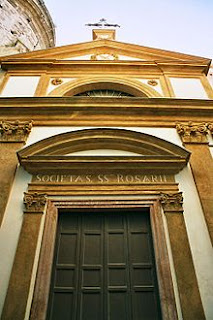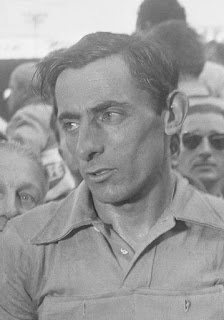Celebrations in Turin for historic Statute
 |
| Charles Albert, King of Sardinia |
The Albertine Statute - Statuto Albertino - which later
became the Constitution of the Kingdom of Italy, was approved by Charles
Albert, King of Sardinia, on this day in 1848 in Turin.
The Constitution was to last 100 years, until its abolition
in 1948 when the Constitution of the new Italian republic came into effect.
The Statute was based on the French Charter of 1830. It
ensured citizens were equal before the law and gave them limited rights of
assembly and the right to a free press.
However, it gave voting rights to less than three per cent
of the population.
The Statute established the three classic branches of government: the executive, which meant the king, the legislative, divided
between the royally appointed Senate and an elected Chamber of Deputies, and a
judiciary, also appointed by the king.
Originally, it was the king who possessed the widest powers,
as he controlled foreign policy and had the prerogative of nominating and
dismissing ministers of state.
In practice, the Statute was gradually modified to weaken
the king’s power. The ministers of state became responsible to the parliament
and the office of prime minister, not provided for in the Constitution, became
prominent.
 |
| Charles Albert signs the Albertine Statute |
The king, however, retained an important influence in
foreign affairs and in times of domestic crisis his role was pivotal.
The social base of the constitution was gradually broadened
so that by 1913 universal adult male suffrage was achieved.
Under the Fascist regime the Statute was substantially
modified to put control of the Government into the hands of the Fascist Party.
Charles Albert, the King of Sardinia between 1831 and 1839,
gave his name to the beginnings of the Italian Constitution as it was called
the Albertine Statute.
Before the statute was drafted Charles Albert had said he
would not approve it if it did not clearly state the pre-eminent position of
the Catholic religion and the honour of the monarchy. Once he had obtained
these concessions he approved it.
Later that day a royal edict was published in the streets of
Turin laying out the 14 articles which formed the basis of the Statute.
By the evening the city was lit up by bonfires and a massive
demonstration in favour of Charles Albert took place.
The full version of the Statute with all its articles was
finally agreed on March 4, 1848 and approved the same day by Charles Albert.
 |
| The Piazza Castello in the heart of royal Turin |
Travel tip:
Turin, the capital city of the region of Piedmont, has some
fine architecture, which illustrates its rich history as the home of the Savoy
Kings of Italy. Piazza Castello, with the royal palace, royal library and
Palazzo Madama, which used to house the Italian senate, is at the heart of
‘royal’ Turin.
 |
| The Palazzo Viceregio is a former royal palace |
Travel tip:
The monarchs of the House of Savoy ruled from their mainland
capital of Turin but styled themselves primarily Kings of Sardinia after Victor
Amadeus II of Savoy was the first to rule the island after it was ceded to him
by Emperor Charles VI in 1720. For a short period between the end of the 18th
century and the beginning of the 19th century the Palazzo Viceregio in Cagliari
in Sardinia was the official royal residence after the King was exiled from
Turin.











